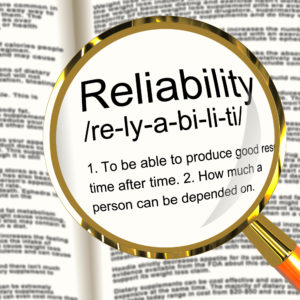Citation Needed: Why Your Writing Depends on Citing Your Sources
Journalists, academics, and Wikipedia contributors have widely varying abilities to put together coherent sentences, but they all know this: Unless it’s a firsthand account, something stated as a fact, without a source to back it up, is merely an opinion.
Of course, there are many ways to cite sources, and there is a time and place for each, as I will discuss shortly. First, however, let’s review what sources are and why they are important in different kinds of writing.
The Importance of Sources
You’d better be sitting down for this: you don’t know everything. So when you’re describing something that is supposed to be factual, and which you did not do or witness yourself, it’s helpful to cite a reliable source, which can be a direct quote from a named person, or reference to a published book, article, or other document. Among other advantages, citing sources does the following:
- Adds credibility to your writing: When you quote or cite reputable sources, you show that you did your homework and sought outside expertise to support the purpose of your writing.
- Facilitates fact-checking: Citing sources enables others to double-check your statements. This is especially important in academic writing, where misinterpreting someone’s prior research can lead your own research in the wrong direction. This peer-review process ensures solid academic work and improves the body of human knowledge overall.
- Encourages others to dig deeper: When you cite sources, you enable people who are really interested in your subject to seek more information about it. You do your readers a service when you give them ways to probe further.
- Keeps you from looking like an idiot: When you state something as fact without a source, and it turns out to be false, you risk ridicule (at best), harm to your professional reputation, or even legal trouble. There is no shame in citing a reputable source that turns out to be wrong. (For in-depth investigative pieces, however, it’s good practice to have multiple sources corroborate a factual statement.)
Levels of Citation
There is a broad spectrum of rigor when it comes to citing sources. Here are some common approaches, and where they are typically applied:
- Chapter and verse: A complete description of where to find the cited material; these are found most often in academic writing, Wikipedia articles, and other pieces where factual rigor is of primary importance.
- Publication and issue: You will often read things like “in a paper published in the June issue of Nature” in newspaper and magazine articles. It’s still specific enough for readers to find, but they have to do a bit of digging.
- Source and type: We’re moving down the credibility scale here: “In a press release, ABC company reported….” “A study by the XYZ think tank concludes….” They’re sources—you at least have the illusion having done some homework—but they’re much more difficult for readers to track down. These are more appropriate in lighter fare where rigor is less important.
- Super vague: “Studies show this, that, and the other.” What studies? By whom? At this point you might as well be making stuff up. This is for advertising, memes, and social media.
Pro Tips
- Anonymous sources cannot be assumed to be reliable, because there is no way for readers to follow up with them. When quoting an anonymous source, you should indicate why the source asked to remain anonymous.
- Government officials, whether elected or appointed, often do not make good sources. They quote impressive-sounding “facts” but rarely reveal where they got their information. So, when Sen. Batson D. Belfry (of Shoe comic-strip fame) says “Over 5,000 children die each year from exposure to fake news,” you will best serve your readers by tracking down the actual source of that tidbit—and what that source actually says, which may be quite different from the senator’s self-serving interpretation—rather than taking it at face value.
“Wait a minute,” you’re saying. “In this article about citing sources, you didn’t cite any sources! HAH!” Quite true, dear reader. As a blog article, this piece is, by definition, an opinion piece. Remember at the beginning, when I said that facts without sources are merely opinions? The corollary is that opinion pieces do not necessarily need sources. Thus, every word in this article is my own opinion, and I make no other claims about it; use it at your own risk.
And you can quote me on that.
Morris Vaughan is a technical writing consultant in Los Angeles, California.

